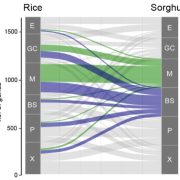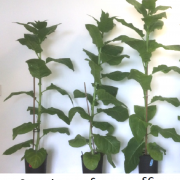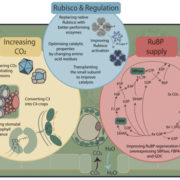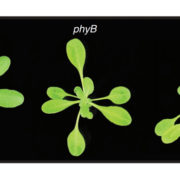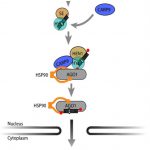Rubisco accumulation factor 1 and carboxysome biogenesis (PNAS)
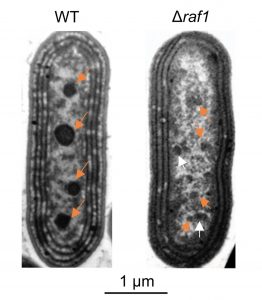
Carbon concentration mechanisms (CCMs) refer to a diverse set of strategies by which photosynthetic organisms increase the amount of carbon dioxide available to the carbon-fixing enzyme Rubisco. The cyanobacterial CCM relies on the carboxysome, a membraneless microcompartment with a core of densely packed Rubisco holoenzymes surrounded by a proteinaceous shell. Each holoenzyme is composed of four anti-parallel Rubisco large subunit (RbcL) dimers together with eight small subunits (RbcS). The Rubisco Assembly Factor 1 (Raf1) is known to assist in Rubisco holoenzyme assembly during the early stages of carboxysome formation. Here, Huang et al. use cryo-electron microscopy to solve the structure of the RbcL-Raf1 complex, showing how Raf1 assists in both RbcL dimer formation and in dimer-dimer interactions, thereby stabilizing the holoenzyme. This job is apparently critical, because in the absence of Raf1 carboxysome formation is severely disrupted and the cells grow poorly unless supplemented with high concentration of carbon dioxide. (Summary by Frej Tulin @FrejTulin) Proc. Natl. Acad. Sci. USA 10.1073/pnas.2007990117


